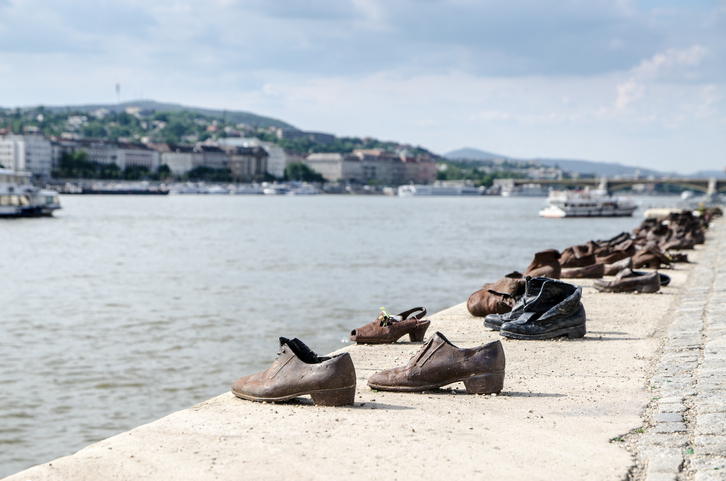If you find yourself in the city of Budapest, at some point you’re going to stroll by the Danube River. Its banks provide the most fantastic views of monumental buildings and blue water. Walking along its shores, you’ll come to the end of Szechenyi Street, where you’ll find the most moving Holocaust memorial. named the Shoes on the Danube Promenade, placed in an open space and approachable for visitors. The memorial consists of iron-made, rusty shoes set into the concrete of the embankment.
These shoes stand as witnesses to one of Budapest’s most somber moments during World War II, reflecting the war history and its victims of that time. The location and the elements of the memorial offer an insight into the tragic fate of the Jews who in the winter of 1944-1945 were tied together, shot on the banks of the river, and thrown into it by the members of the Arrow Cross Party. The party publicly murdered thousands of Jews all over Budapest. They found it convenient to throw them into the Danube because the river quickly carried the bodies away. The atrocious Arrow Cross murderers usually forced the victims to remove their shoes before shooting them.
At that time of war, shoes were a valuable commodity and the murderers were quite aware of that, so they would trade the shoes on the black market or wear them themselves. The Jewish children stood terrified while the Arrow Cross pulled their shoestrings out, tying the hands of the victims before shooting them. Sometimes, the hands of two or three people were tied together, adults or children, and the atrocity went so far that only one of them would be shot so he or she would instantly pull the helpless others down in the freezing cold water. During these horrible winter days of 1944-1945, the Danube was called “the Jewish Cemetery.”
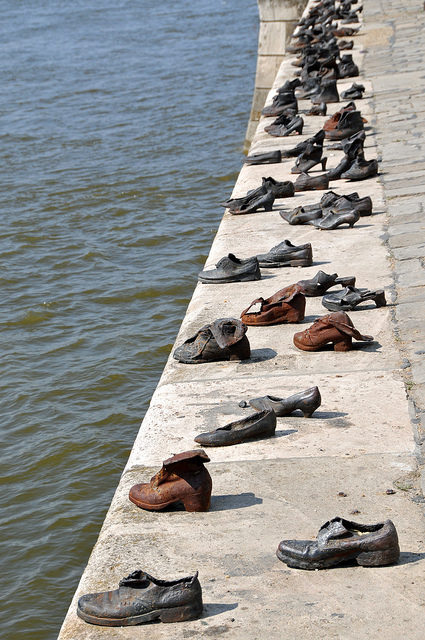
According to records from Yad Vashem, the World Holocaust Remembrance Center in Jerusalem, there is a firsthand account of the horrific events along the Danube told by Zby Zsuzsanna Ozsváth, a Hungarian survivor who was saved by her nursemaid, Erzsi Fajo:
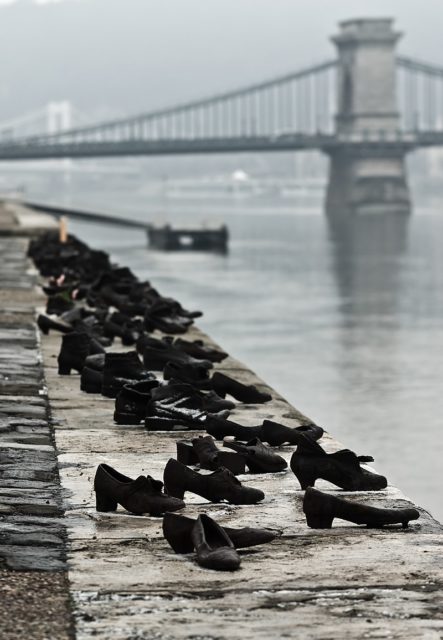
“…I heard a series of popping sounds. Thinking the Russians had arrived, I slunk to the window. But what I saw was worse than anything I had ever seen before, worse than the most frightening accounts I had ever witnessed. Two Arrow Cross men were standing on the embankment of the river, aiming at and shooting a group of men, women, and children into the Danube – one after the other, on their coats the Yellow Star. I looked at the Danube. It was neither blue nor gray but red. With a throbbing heart, I ran back to the room in the middle of the apartment and sat on the floor, gasping for air.”
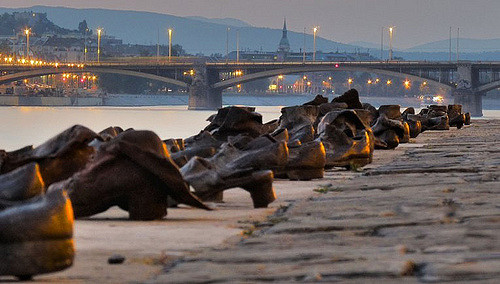
The Shoes on the Danube Promenade was conceptualized by film director Can Togay, who later created it together with the sculptor Gyula Pauer. In 2005, they installed the memorial on the east bank of the Danube river, placing three iron signs that read in Hungarian, English, and Hebrew: “To the memory of victims shot into the Danube by Arrow Cross militiamen in 1944-45. Erected 16 April 2005.”
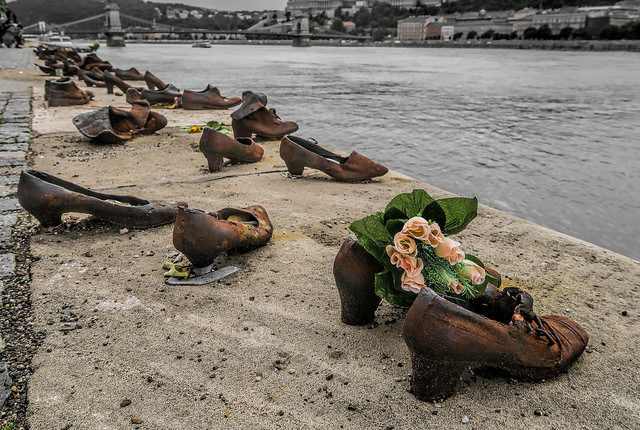
The composition consists of 60 pairs of period-appropriate iron shoes. Behind them lies a 1,300-yard-long, 28-inch-high stone bench. Besides the daily visitors and tourists, the memorial is frequently visited by relatives of the fallen victims who lay flowers and wreaths and light candles to honor those whose lives were tragically taken. At night, the sculpture is lit only by the glow of the flickering candles.
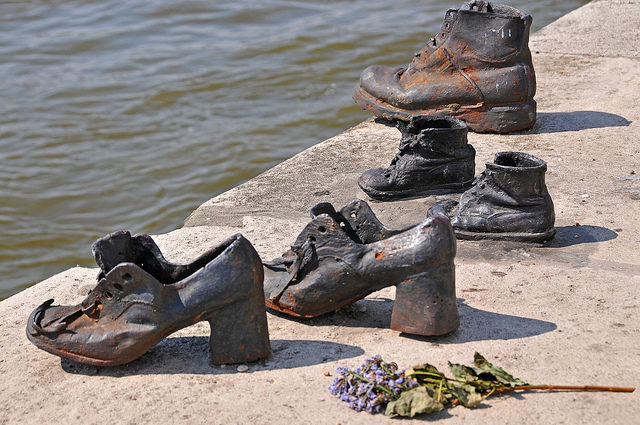
The authors have succeeded in depicting the incredible brutality while still commemorating the Jewish victims of World War II in a dignified manner.
Their memorial stands as a post-apocalyptic witness of history, whereas the numerous shoes (ladies’ pumps, school children’s flats, workers boots–some of them with worn-down heels, others with straps left open) remind and warn us that war casualties are not just statistical numbers.
